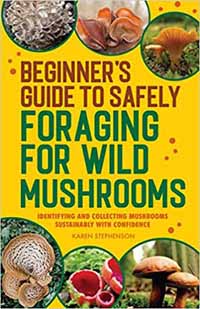

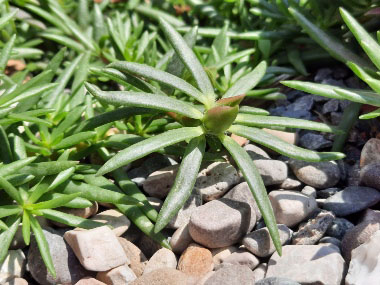
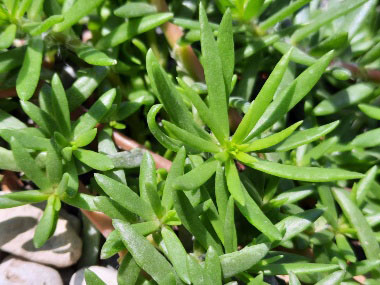
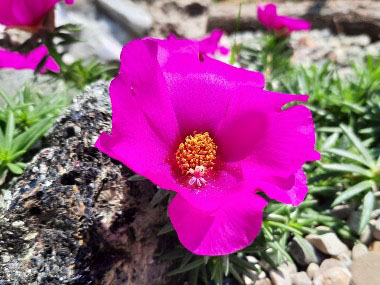
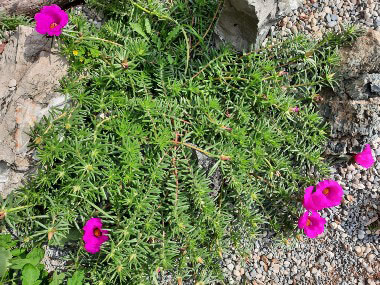
To support our efforts please browse our store (books with health benefits, etc.).
Portulaca amilis, is known by a few common names but most common as the Pink portulaca, broadleaf pink portulaca, or the Paraguayan purslane. It is native to South America. Specifically, its native range includes the lower Amazon basin, encompassing Brazil, Paraguay, Uruguay, and Argentina. It is a succulent annual that thrives in disturbed areas with well-drained soil. Pink portulaca has been introduced and naturalized in other regions including the southeastern United States. It can be purchased in many garden centers throughout the U.S. and Canada.
Distinguishing Features
It is a prostrate or sub-erect, summer, annual herb that spreads along the ground to form dense mats. Bright pink showy flowers are produced in terminal heads from midsummer into early autumn or all year round in tropical climates.
Flowers
Bright pink, five petaled with each petal measuring 20 to 30 mm ( 0.78 to 1.18") in diameter. Sepals are broadly triangular-ovate. Each flower has anywhere from 15 to 45 stamens and 7 to 10 stigmas.
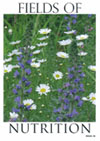 Fields
of Nutrition has medicinal benefits and vitamin/mineral content of Pink Portulaca.
Fields
of Nutrition has medicinal benefits and vitamin/mineral content of Pink Portulaca.
Leaves
Leaves are thick, somewhat flat, fleshy, cylindrical, slightly pointed at the tip, and arranged alternately on the stem. They can range 5 to 30 cm (2 to 11") long and 2 to 15 mm (0.07 to 0.59") wide.
Height
This plant is prostrate but it can reach 15cm (6") in height.
Habitat
This portulaca can be found in sandy fields, lawns, and other dry, sandy, disturbed habitats.
Edible Parts
All parts are edible, including the leaves, stems, flowers, and seeds. It has a mild, yet slightly sour flavor, and the leaves and stems have a juicy texture. Young leaves and stems are best eaten raw, while older stems can be cooked in dishes like stir-fries and casseroles. Purslane can be high in oxalates, so individuals prone to kidney stones should consume it in moderation, especially when raw.
Other Name
Broadleaf Pink Portulaca.
Similar Plants
Portulaca pilosa.
Winter Survival Food Handbook

PDF Plant Magazines
Types of Wild Food
Geographic Zones Seasons
Disclaimer
EdibleWildFood.com is informational in nature. While we strive to be 100% accurate, it is solely up to the reader to ensure proper plant identification. Some wild plants are poisonous or can have serious adverse health effects.
We are not health professionals, medical doctors, nor are we nutritionists. It is up to the reader to verify nutritional information and health benefits with qualified professionals for all edible plants listed in this web site. Please click here for more information.
Why Edible Wild Food?
- Food costs are rising
- Free, wild food is readily abundant
- Wild food adds nutrition to your diet
- Wild food can help treat various medical conditions





